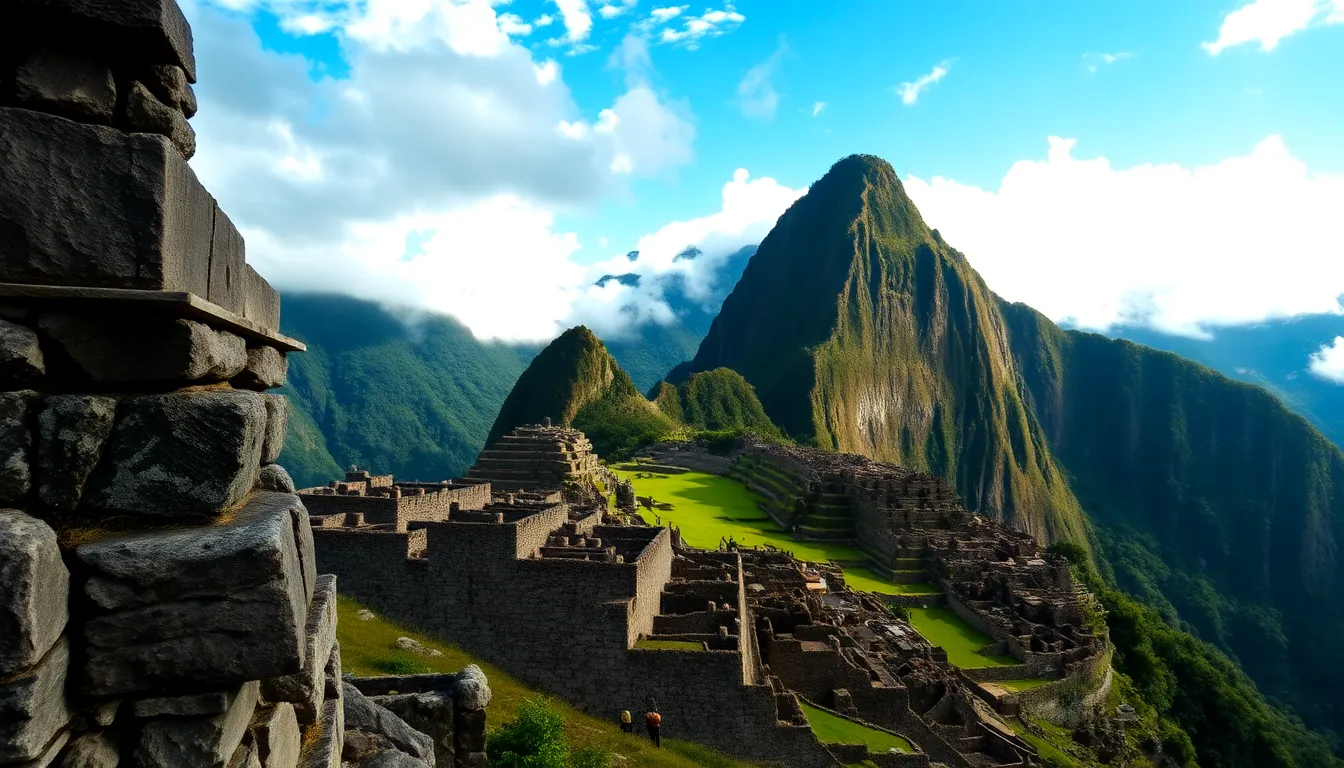The Kingdom of the Undead: Myths of Vampires and Zombies
I. Introduction
The concept of the undead has fascinated humanity for centuries, serving as a bridge between the living and the afterlife. In folklore, the undead are often depicted as beings that transcend death, embodying the fears and desires of various cultures. Among these figures, vampires and zombies have emerged as two of the most iconic representations of the undead in popular culture.
This article aims to explore the rich tapestry of myths surrounding vampires and zombies, examining their historical origins, cultural significance, and lasting impact on literature and media.
II. Historical Origins of Vampires
Vampires have a complex history that dates back to ancient civilizations, where beliefs in blood-drinking entities were common. In many cultures, these creatures were associated with disease, death, and the supernatural.
- Ancient Civilizations: The earliest records of vampire-like beings can be traced to Mesopotamian, Egyptian, and Greek mythologies, where spirits and demons were believed to feed on the life force of the living.
- European Evolution: The vampire lore we recognize today began to take shape in Europe during the Middle Ages, heavily influenced by folklore from Eastern Europe, particularly the Balkans.
- Key Figures: Historical figures like Vlad the Impaler, whose brutal reign inspired Count Dracula, have contributed to the vampire mythos, intertwining history with legend.
III. The Evolution of Zombie Mythology
Zombies have their roots in Haitian Vodou, where they are believed to be reanimated corpses controlled by a sorcerer. This concept has evolved dramatically in Western culture.
- Haitian Vodou: In Vodou, the ‘zombi’ is a person who has been brought back to life through magical means, often to serve a master.
- Western Transformation: The portrayal of zombies shifted in the 20th century, particularly with George A. Romero’s films, which framed zombies as mindless, flesh-eating monsters.
- Defining Characteristics: Across cultures, zombies are often depicted as soulless beings, lacking consciousness and driven by primal instincts.
IV. Common Themes and Symbolism in Undead Myths
Both vampire and zombie myths explore fundamental themes that resonate deeply with humanity.
- Fear of Death: The undead symbolize our deepest fears regarding mortality and the unknown aspects of death.
- Struggle Between Life and Death: The ongoing conflict between the living and the undead reflects the tension inherent in the human experience.
- Immortality’s Consequences: Vampires often represent the allure and peril of immortality, highlighting the emotional and ethical dilemmas that arise from eternal life.
V. Vampires in Popular Culture
Vampires have become a staple in literature and media, evolving from folklore to complex characters in modern narratives.
- Literature: Bram Stoker’s “Dracula” set the stage for modern vampire literature, influencing countless authors and spawning numerous adaptations.
- Film and Television: Iconic portrayals, such as those in “Interview with the Vampire” and the “Twilight” series, have shaped public perception and understanding of vampires.
- Contemporary Impact: Vampire myths continue to thrive in media, reflecting societal changes, desires, and fears.
VI. Zombies in Popular Culture
Zombies have also taken a prominent place in popular culture, especially in film and television.
- Literature: The evolution of zombie narratives from folklore to contemporary dystopian tales reflects changing societal anxieties.
- Film and Television: Starting with Romero’s “Night of the Living Dead,” zombies have been depicted in various ways, culminating in series like “The Walking Dead.”
- Societal Reflections: Zombie narratives often comment on societal issues such as consumerism, disease, and the collapse of civilization.
VII. Psychological and Sociological Interpretations
The undead serve as powerful symbols in psychological and sociological contexts, revealing insights into human fears and societal dynamics.
- Psychology of Fear: The fear of vampires and zombies often stems from deeper anxieties regarding death, loss of control, and the breakdown of societal norms.
- Societal Implications: During times of crisis, the undead can reflect collective fears and the moral dilemmas faced by society.
- Exploring Morality: Stories of the undead often force characters to confront ethical choices, challenging our understanding of morality in extreme situations.
VIII. The Undead in Global Mythologies
Undead myths are not confined to Western culture; they exist in various forms around the world.
- Vampire Comparisons: Myths such as the Chupacabra in Latin America and the Strigoi in Romania showcase the global fascination with blood-drinking entities.
- Zombie Myths: Different cultures feature their own versions of zombies, such as the Jiangshi in China and the Wendigo in Native American folklore.
- Globalization’s Influence: As cultures blend, the portrayal of undead creatures is evolving, leading to new interpretations and hybrid myths.
IX. The Future of Undead Myths
The narratives surrounding vampires and zombies continue to evolve, influenced by contemporary trends and technologies.
- 21st Century Trends: Current vampire and zombie stories often explore themes of identity, power, and societal collapse, reflecting modern anxieties.
- Impact of Technology: Social media and digital platforms are shaping how these myths are told, allowing for interactive and immersive storytelling.
- New Directions: Future stories may delve into previously unexplored themes, offering fresh perspectives on the undead.
X. Conclusion
Vampires and zombies remain enduring figures in folklore and popular culture, reflecting our deepest fears, desires, and moral dilemmas. Their myths are not just stories of horror; they are profound explorations of what it means to be human in the face of death and the unknown. As we move forward, the evolution of these myths will undoubtedly continue, adapting to the changing landscape of culture and society.



